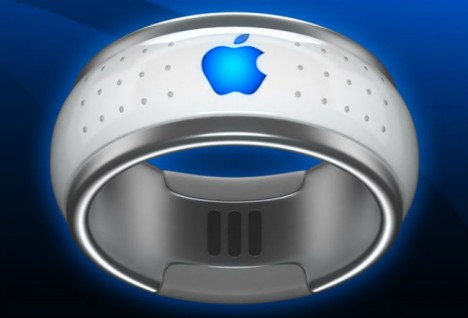In the current era, when we think of terms like “fitness tracker” or “wearable tech,” the immediate image that comes to mind is often that of a smartwatch, with suave models like the Apple Watch Series 9 taking center stage. The appeal lies in the seamless experience of receiving notifications, accessing apps, and maintaining continuous health and fitness monitoring—all conveniently encapsulated within a wrist-worn device.
Nevertheless, there is a growing trend in diversifying how we incorporate health technology into our daily wardrobe. Smart jewelry, with a specific emphasis on smart rings, is emerging as a notable contender in this landscape. One noteworthy example is the Oura Smart Ring, which has gained considerable attention as a popular choice in the ‘wearable tech’ segment. It provides a discreet and stylish alternative for individuals keen on owning health-conscious wearables thereby forming a well-rounded and adaptable approach to health tracking.
The smart wearable market is on the brink of a significant shake-up as Samsung and Apple prepare to introduce the Galaxy Smart Ring and Apple Smart Ring, marking their entry into a distinctive wearable segment. The potential impact of these forthcoming products on the broader wearable market is readily apparent.
Despite numerous tech companies exploring experimental product categories, many of these ventures have fallen short, resulting in products that remain relegated to niche markets. Although smart rings already exist, they have not yet garnered widespread recognition.
With their formidable presence in the mobile industry, Samsung and Apple wield the brand power necessary to initiate transformative shifts across the entire industry and pave the way for innovative revenue streams. Apple, in particular, stands out prominently in this regard. If these tech giants engage in a competitive rivalry within the emerging smart ring segment, it seems highly likely that the Galaxy Smart Ring and Apple Smart Ring will reshape our perspective on wearable devices, ushering in a new era of possibilities.

Why choose the Apple Smart Ring over the SmartWatch?
Continue with the traditional watch
The Apple Smart Ring launch will present a notable advantage in catering to a segment of customers often overlooked by smartwatches. This group comprises individuals who seek fitness and health tracking benefits but are hesitant to part with their traditional watches, perceiving smartwatches as somewhat whimsical in comparison.
Smart rings offer an elegant solution by enabling prospective customers to access platforms Apple Health without the necessity of a smartwatch or wristband. Imagine the convenience of continuing to wear a beloved Rolex or G-Shock watch while seamlessly capturing health and fitness data—a seamless integration that preserves personal style without compromise. The Apple Smart Ring will make this sophisticated coexistence possible adding class to the style.
Fitness and health tracking benefits
This development carries significant implications for health platforms, potentially allaying concerns about smart rings cannibalizing smartwatch sales. Enthusiasts of smartwatches can persist with devices like the Galaxy Watch and Apple Watch. Simultaneously, those who prefer not to embrace smartwatches now have a viable option to harness the capabilities of popular health platforms without the need to transition to a Galaxy Watch or Apple Watch.
Although there may be some demographic overlap between smartwatch and non-smartwatch users, the primary strength of the Apple Ring lies in its capacity to expand its respective health user bases. Whether users lean towards smartwatches or traditional timepieces, these smart rings will serve a section of people who expect health and fitness tracking from their wearables, elevating the overall accessibility and appeal of health platforms.
Mobile Payments
In addition to discreetly recording health and fitness data, the Apple Ring may experience increased adoption due to its potential for streamlined mobile payments. It should probably come loaded with NFC connectivity support monetary transactions and offer a convenient alternative for users making in-store purchases. The idea of making payments with a ring introduces a novel and attractive aspect, likely enticing users to explore or showcase this innovative payment method.
Digital Key
Furthermore, should the Apple Ring feature digital key capabilities, users could effortlessly unlock their cars without relying on a smartwatch or smartphone. While the implementation of digital car keys is currently more advanced in the Apple Watch series than in Samsung’s Galaxy Watches, it presents an intriguing prospect for future developments.
Play Games
The notion that Apple Arcade, designed to provide games playable on different Apple devices, might encounter challenges on smaller screens is a valid consideration. Attempting to play modern video games on a diminutive screen could pose difficulties, potentially influencing the overall gaming experience.
To summarize, the Apple Ring appears poised to fill a market gap that conventional smartwatches may not address, serving as complementary options rather than replacements for wrist wearables. These smart rings could emerge as the preferred choice for individuals who value traditional watches or possess a distinctive fashion sense while remaining open to integrating fitness and health tracking into their daily routines. While smart rings may not directly compete with smartwatch sales, they hold the potential to bring significant innovation to the wearable segment. Additionally, their presence could spotlight the capabilities of Apple Health platforms and services, enhancing their relevance in the market.
As Apple gears up to launch ‘Apple Glasses‘, the accompanying Apple Smart ring could play a pivotal role in enhancing user experiences. Despite the ring’s rumored compact display, its potential interaction with the glasses opens up a range of exciting possibilities. This collaborative functionality might enable users to perform tasks like internet scrolling and video watching on their phones without the need to physically retrieve the device from their pocket. Moreover, the audio from these videos could seamlessly stream to AirPods, offering a more immersive and integrated user experience. This integration of wearable devices has the potential to reshape how users engage with and enjoy content in their everyday lives.

